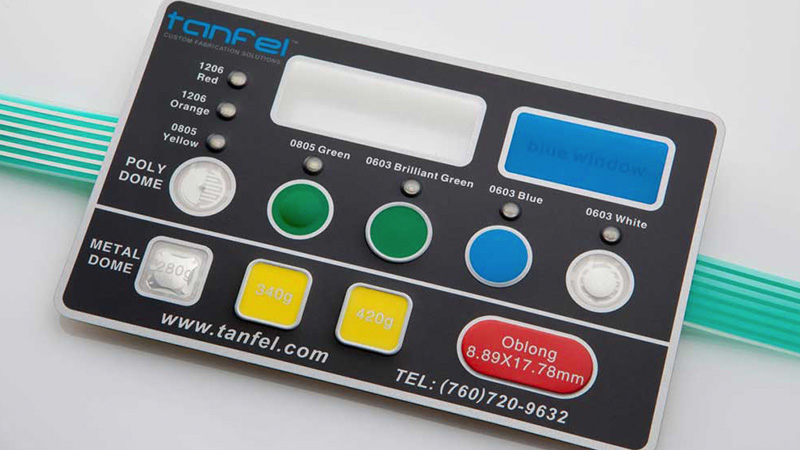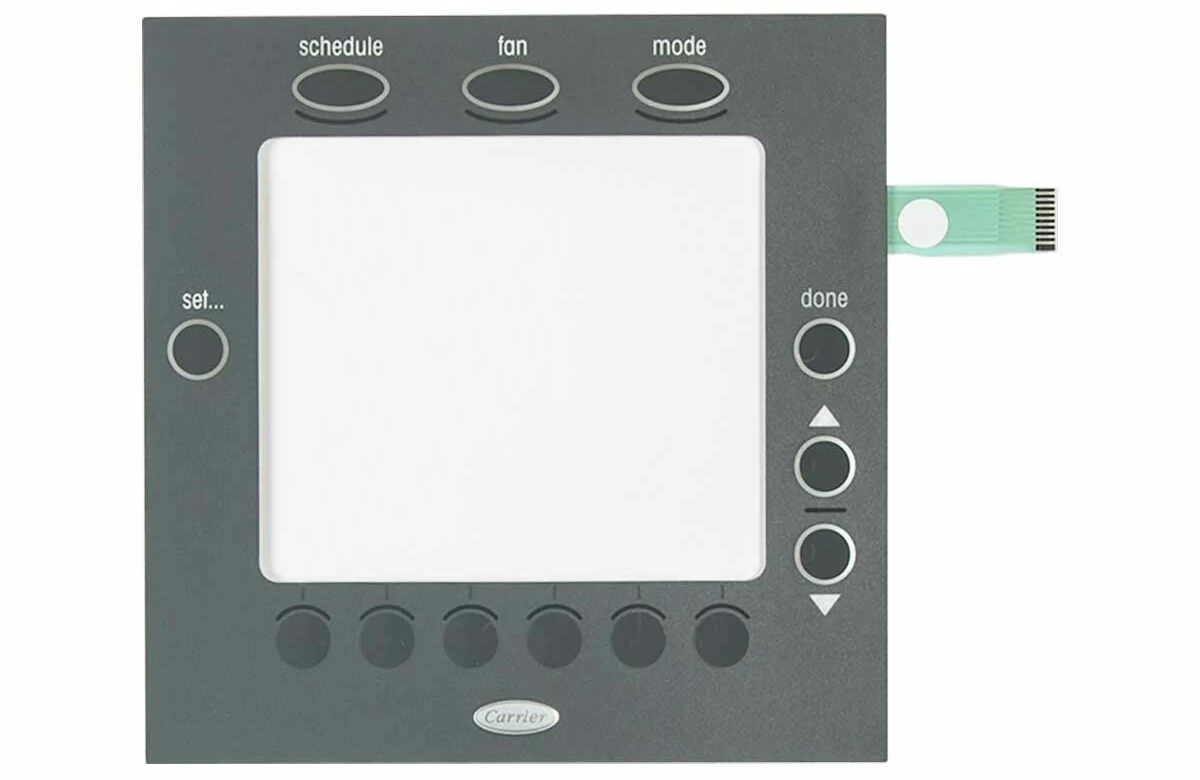How Membrane Switches Are Revolutionizing User Interface Design
How Membrane Switches Are Revolutionizing User Interface Design
Blog Article
Recognizing the Importance of Membrane Switches in User User Interfaces
Membrane switches are important components in the style of efficient customer interfaces, facilitating not just functionality but also enhancing visual charm and customer interaction. As we discover the different advantages and future fads linked with Membrane technology, it comes to be clear that these switches are much more than simply components; they stand for a convergence of innovation and functionality.
What Are Membrane Buttons?

The spacer layer, which has glue buildings, enables for the splitting up of the circuit layer from the overlay, making sure that the button stays in a non-activated state until pushed. When stress is related to the overlay, it compresses the spacer layer, connecting the void and finishing the circuit in the underlying layer. This layout not only lowers the physical room needed for standard mechanical buttons but additionally boosts the resilience of the gadget, as Membrane switches are usually resistant to dirt, wetness, and other ecological variables.
Typically discovered in applications ranging from customer electronics to medical tools, Membrane buttons are integral to contemporary innovation, providing a easy to use and reliable user interface that aligns with contemporary layout requirements.
Benefits of Membrane Buttons
While many button technologies exist, Membrane Switches deal distinct benefits that make them specifically preferable in various applications. One of the main benefits of Membrane switches is their portable design, which permits space-saving applications in devices where real estate is limited. Their slim account not just enhances visual appeal yet likewise assists in light-weight building and construction.
One more significant advantage is their resistance to ecological aspects. Membrane switches are generally sealed against dampness, dust, and impurities, making them optimal for use in demanding atmospheres, such as clinical tools and commercial tools. This durability expands the life-span of the button, minimizing upkeep expenses and enhancing reliability.
Furthermore, Membrane switches can be tailored to satisfy details design requirements, incorporating distinct graphics and colors that enhance customer communication. Their responsive feedback options can likewise be customized to provide an enjoyable user experience. In addition, Membrane buttons are cost-effective, particularly in high-volume applications, as they can be produced successfully.
Applications in Different Industries

In the consumer electronic devices field, Membrane buttons prevail in gadgets such as microwaves, washing makers, and remotes. Their responsive comments and aesthetic alternatives boost individual experience while providing a smooth, modern-day appearance. In addition, vehicle suppliers use Membrane switches in control panel controls and infomercial systems, where room is restricted, and individual interaction is essential.
Moreover, the commercial market leverages Membrane switches in control panels for machinery and devices, enabling user-friendly procedure in commonly rough settings. Their resistance to chemicals and moisture makes sure long life and integrity in these applications. In general, the flexibility of Membrane Switches adds considerably to their prevalent use, making them essential in different technical domains.
Design Factors To Consider for Membrane Buttons

When creating Membrane switches, a number of essential considerations have to be taken into account to make sure ideal functionality and customer experience. The selection of materials is crucial; choosing long lasting, top notch substratums can boost the switch's long life and resistance to ecological aspects such as moisture and temperature level fluctuations.
Secondly, the style of the graphic overlay must prioritize clarity and simplicity of use. Symbols and message have to be legible, and the layout ought to assist in intuitive interaction (membrane switches). In addition, tactile comments is essential; incorporating a responsive dome or various other mechanisms can improve the customer experience by supplying physical verification of activation
An additional essential factor is the button's electric performance. Developers should weblink ensure that the conductive traces are appropriately made to reduce resistance and avoid signal disturbance. This entails evaluating the called for actuation pressure and guaranteeing compatibility with the electronic elements they will interface with.

Future Trends in Membrane Innovation
As modern technology remains to advance, Membrane buttons are poised to advance considerably, driven by innovations in products and producing methods. One arising pattern is the unification of sophisticated materials, such as conductive inks and versatile substrates, which boost durability and reduce the total weight of Membrane switches. These materials not only enhance the tactile action yet likewise permit for the style of buttons that can endure harsher ecological problems.
Furthermore, the combination of touch-sensitive modern technologies is changing standard Membrane Switches right into even more interactive individual interfaces. Capacitive touch sensing units installed within Membrane button panels can offer a more intuitive and responsive customer experience, straightening with the growing need for smooth, modern-day designs in customer electronics.
Additionally, advancements in printing strategies, such as electronic and 3D printing, allow rapid prototyping and personalization of Membrane buttons. This adaptability allows suppliers to respond quicker to market needs and consumer choices.
Last but not least, sustainability is becoming a significant emphasis, with producers exploring environment-friendly materials and procedures. As these patterns unravel, the future read this article of Membrane technology assures improved capability, aesthetic charm, and ecological duty, solidifying their role in sophisticated interface across numerous industries.
Verdict
Finally, Membrane Switches stand for an essential element in the style of interface, integrating capability with aesthetic adaptability. Their advantages, consisting of sturdiness and resistance to environmental aspects, make them ideal for varied applications across different industries. Moreover, thoughtful style factors to consider improve user interaction and experience. As advancements in technology continue, the advancement of Membrane buttons is expected to further this post improve individual interfaces, driving development and boosting functionality in a progressively complex technological landscape.
Membrane switches are indispensable elements in the layout of reliable individual interfaces, assisting in not only capability but additionally improving visual allure and user interaction.Membrane Switches offer as an important part in various user interfaces, promoting a smooth communication in between individuals and digital devices.While numerous button modern technologies exist, Membrane Switches offer distinct advantages that make them especially desirable in numerous applications.Additionally, Membrane buttons can be personalized to satisfy particular design requirements, including special graphics and colors that boost individual interaction.In conclusion, Membrane Switches stand for an essential part in the style of customer interfaces, integrating performance with visual versatility.
Report this page